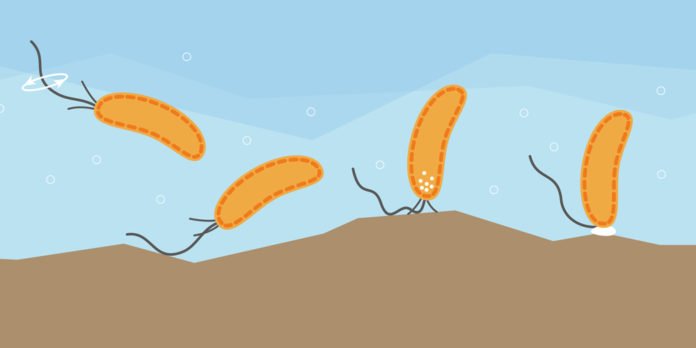Bacteria, that live in enormous numbers in almost every environment on Earth, do not usually have sensory organs. Certainly, bacteria are much more active in probing their environment than other sensitive organisms.
A new study by the University of Basel’s Biozentrum has made a groundbreaking discovery in science. They have found that bacteria not only respond to chemical signals but also possess a sense of touch.
In their new study, they demonstrated how microorganisms perceive surfaces and react to this mechanical boost inside seconds. By focusing on chemical signals, they explored how bacteria perceive and process chemical signals.
They used the non-pathogenic Caulobacter as a model to show that bacteria have a ‘sense of touch’. This mechanism helps them to recognize surfaces and to induce the production of the cell’s own instant adhesive.
The non-pathogenic Caulobacter a rotating motor in their cell envelope with a long protrusion, the flagellum. Its rotation due to proton flow into the cell enables the bacteria to move in liquids. When scientists observed the rotor, they found that it can be used a mechano-sensing organ. When swimming cells touch surfaces, the motor is disturbed and the proton flux interrupted.
The bacterial cell now supports the union of a moment courier, which thusly empowers the generation of an adhesion that solidly grapples the microscopic organisms at first glance inside a couple of moments. This is a noteworthy case of how quickly and particularly microscopic organisms can change their conduct when they experience surfaces.
Led by Prof. Urs Jenal said, “Even though Caulobacter is a harmless environmental bacterium, our findings are highly relevant for the understanding of infectious diseases. What we discovered in Caulobacter also applies to important human pathogens. In order to better control and treat infections, it is mandatory to better understand processes that occur during these very first few seconds after surface contact.”
